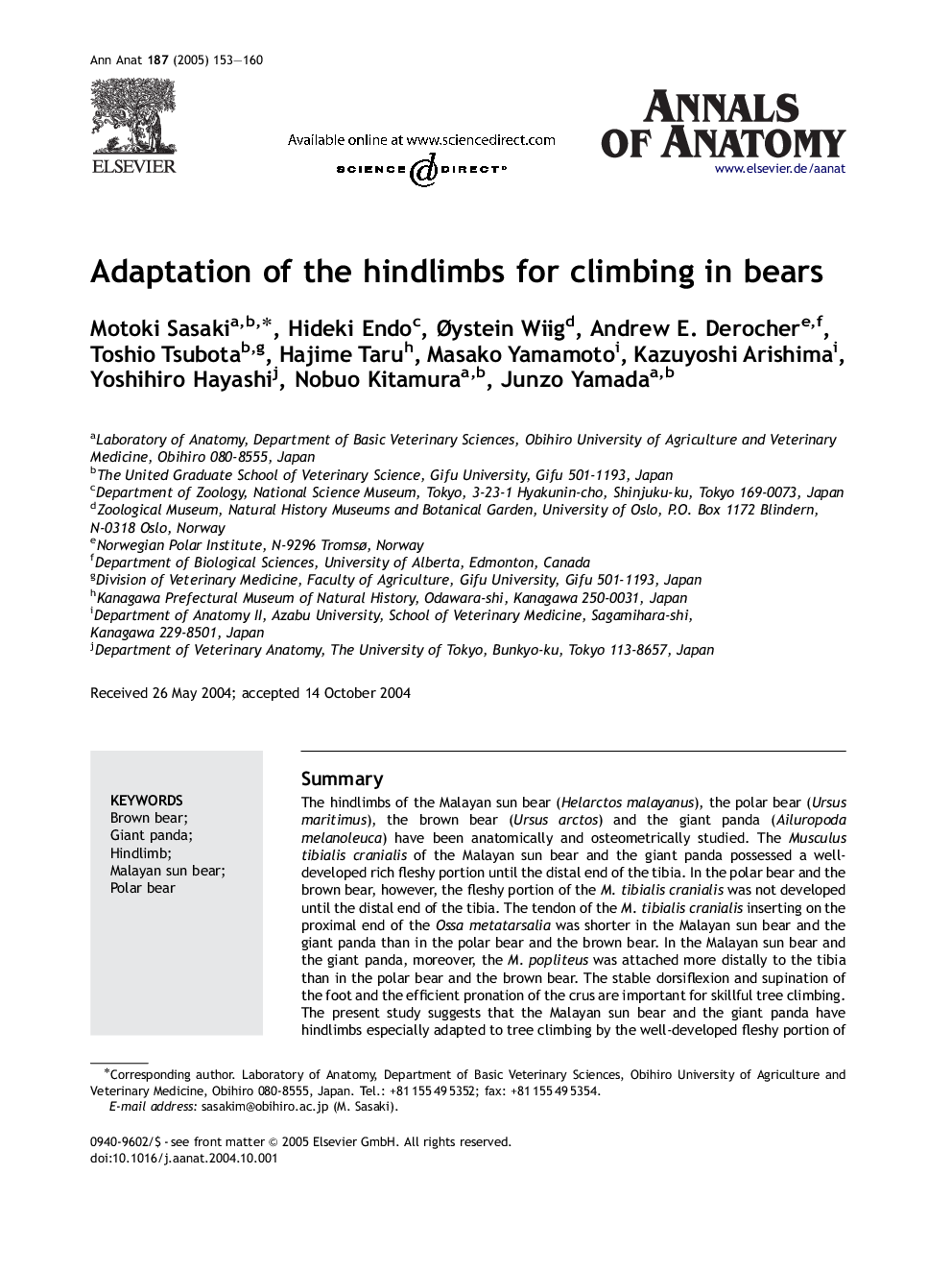| Article ID | Journal | Published Year | Pages | File Type |
|---|---|---|---|---|
| 9911078 | Annals of Anatomy - Anatomischer Anzeiger | 2005 | 8 Pages |
Abstract
The hindlimbs of the Malayan sun bear (Helarctos malayanus), the polar bear (Ursus maritimus), the brown bear (Ursus arctos) and the giant panda (Ailuropoda melanoleuca) have been anatomically and osteometrically studied. The Musculus tibialis cranialis of the Malayan sun bear and the giant panda possessed a well-developed rich fleshy portion until the distal end of the tibia. In the polar bear and the brown bear, however, the fleshy portion of the M. tibialis cranialis was not developed until the distal end of the tibia. The tendon of the M. tibialis cranialis inserting on the proximal end of the Ossa metatarsalia was shorter in the Malayan sun bear and the giant panda than in the polar bear and the brown bear. In the Malayan sun bear and the giant panda, moreover, the M. popliteus was attached more distally to the tibia than in the polar bear and the brown bear. The stable dorsiflexion and supination of the foot and the efficient pronation of the crus are important for skillful tree climbing. The present study suggests that the Malayan sun bear and the giant panda have hindlimbs especially adapted to tree climbing by the well-developed fleshy portion of the M. tibialis cranialis reaching the distal end of the tibia, its short tendon, and the M. popliteus inserting near the distal end of the tibia.
Related Topics
Life Sciences
Biochemistry, Genetics and Molecular Biology
Cell Biology
Authors
Motoki Sasaki, Hideki Endo, Ãystein Wiig, Andrew E. Derocher, Toshio Tsubota, Hajime Taru, Masako Yamamoto, Kazuyoshi Arishima, Yoshihiro Hayashi, Nobuo Kitamura, Junzo Yamada,
